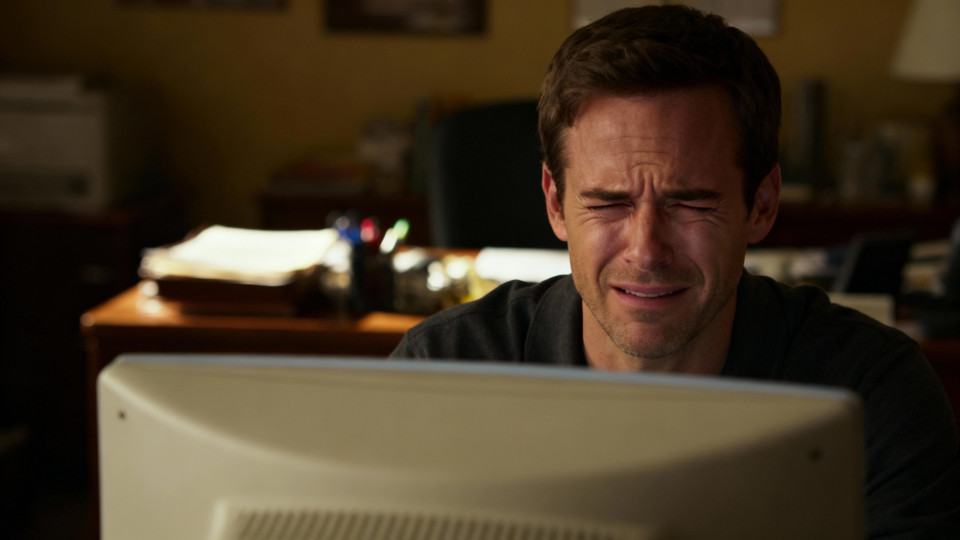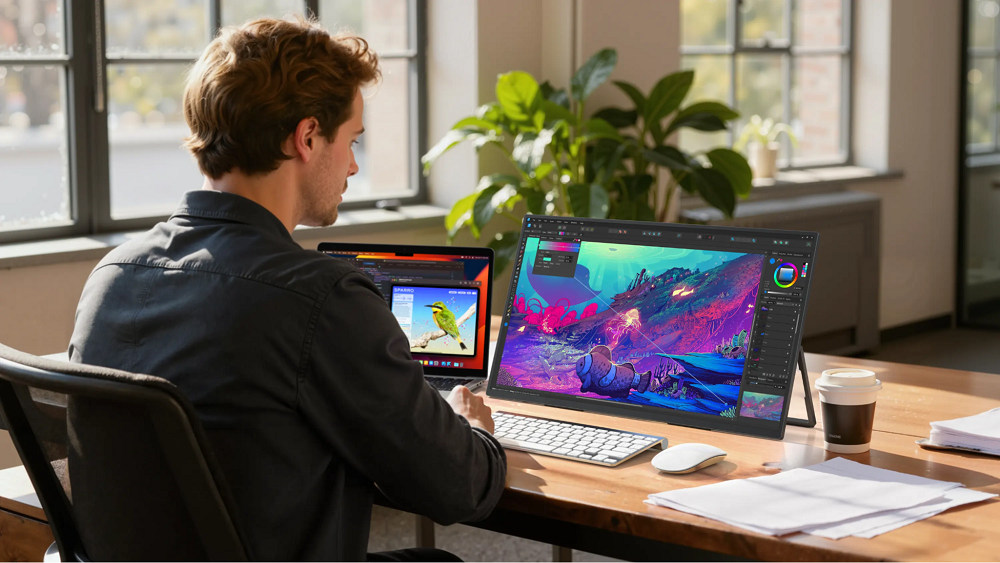Reviews
Are You Experiencing Eye Strain from Your Monitor, and When Should You Worry?

Screens are pretty much where we live these days. Maybe you’re cranking out spreadsheets, bingeing on a new series, or getting lost in a game; chances are, you’re glued to your monitor for hours. And if your eyes start to feel sore, dry, or just worn out after a long stretch, you’re not alone. That’s eye strain talking.
Don’t just shrug it off as something you have to live with. Eye strain is your body waving a little red flag. Still, there’s no need to freak out; most of the time, it’s just your eyes begging for a break, not a sign of something serious. So let’s get into what’s really causing all that screen-related eye fatigue, the importance of a good touch screen computer monitor, how you can make it better, and when it’s time to actually worry.
What Is Eye Strain and Why Does It Happen?
Eye strain, sometimes called digital eye strain or Computer Vision Syndrome, shows up as tired, sore, or burning eyes after you’ve spent too much time staring at screens. Your eyes work overtime trying to focus, adjust to brightness, and make sense of all those tiny pixels. Honestly, our eyes weren’t built for this kind of job.
Staring at something up close, like a monitor, forces your eye muscles to tense up for way too long. That tension leads to blurry vision, headaches, and just plain discomfort. And here’s something people don’t always realize: when you’re glued to a screen, your blink rate drops. Instead of blinking 15 times a minute, you might only blink 5 times. No wonder your eyes feel dry, red, or irritated.
Old-school monitors make it even worse with flickering, harsh glare, and all that blue light. Bad posture doesn’t help. Even top-notch touch screens can wear your eyes out if you don’t set them up right or take breaks.
Signs You Might Be Experiencing Eye Strain
Before you start worrying, it’s good to recognize the signs early. Common symptoms include:
- Dry, itchy, or watery eyes
- Headaches, especially near the temples or behind the eyes
- Blurred or double vision after long use
- Neck and shoulder pain from leaning toward the screen
- Increased light sensitivity
- Difficulty focusing on distant objects after screen time

What Causes Eye Strain From Monitors?
There’s rarely just one reason behind eye strain. Usually, it’s a mix of little habits and the space you’re in. Here’s what tends to cause the most trouble.
1. Brightness and Glare
If your monitor’s blasting out light that’s way brighter than your room, your eyes end up working overtime. They keep adjusting, shrinking, and opening up your pupils nonstop. Toss in some glare from windows or lights, and your eyes have to fight even harder to keep up.
2. Screen Distance and Position
Your monitor should sit about an arm’s length away and just a bit below your line of sight. A lot of people get this wrong. They set their screens too close or too high, so their eyes have to stretch or strain. This gets even worse if you’re using a bigger monitor. Bad positioning just wears you out faster.
3. Flicker and Refresh Rate
Some older or cheaper monitors have this subtle flicker going on. You might not notice it, but your eyes do. After a while, that hidden flicker adds up, and you feel the fatigue. Upgrading to a flicker-free display with a high refresh rate, like a 4k 22 monitor, really helps.
4. Blue Light
Screens give off blue light, and while it won’t ruin your eyes for good, it sure messes with your sleep. Too much, especially late at night, can make it tough to wind down and leave your eyes feeling tired the next day.
5. Not Blinking Enough
When you’re locked in on a monitor, working, gaming, whatever- you tend to blink less. Less blinking means your eyes dry out and start itching.
6. Bad Ergonomics and Lighting
If you’re hunched over in a dark room with a bright screen, your eyes have to work hard to adjust to the contrast. Combine that with neck and shoulder tension from poor posture, and you’re setting yourself up for a whole lot of discomfort.
When Should You Actually Worry?
Occasional eye strain is normal; it just means your eyes are tired. But when the problem becomes chronic, it’s time to take action.
- Persistent headaches or blurry vision even after resting
- Red or swollen eyes that don’t improve
- Difficulty focusing between near and far objects
- Pain behind the eyes or around the temples
- Light sensitivity even when you’re not on your screen
How the Right Monitor Can Help
Staring at a screen for hours? Your monitor makes all the difference for your eyes. Some displays are just rough on you. UPERFECT monitors, though, are built to keep you comfortable.
Why Choose UPERFECT?
If you’re a pro, a student, or a gamer, you know the pain of tired eyes after a long day. UPERFECT gets that. Their monitors cut down on blue light, fight off glare, and ditch the annoying flicker. So you can work (or play) longer without feeling wiped out.
Designing graphics on a sharp 19 inch 4K monitor, or juggling tasks on a 22-inch monitor? UPERFECT keeps the details crisp and the stress low. Their touchscreen models are quick to respond, too, no lag, no washed-out colors, no eye strain.

How UPERFECT Looks Out for Your Eyes
- HDR keeps brightness balanced, not too harsh, not too dim.
- High refresh rates mean smooth visuals, less blur.
- Lightweight, portable builds make it easy to set up anywhere.
- Eye-care mode dials back flicker and blue light, so your eyes catch a break.
The Role of Blue Light Glasses and Monitor Settings
Blue light glasses filter out the harsh stuff and make it easier to fall asleep. And if your monitor supports it, try:
- Adaptive brightness lets the screen adjust to the room.
- Reading mode warms up the tone, takes the edge off.
- Flicker-free backlight, no more headaches from subtle screen flicker.
Kids and Screen Time: A Growing Concern
Kids’ eyes are still growing, and too much screen time isn’t doing them any favors. More close-up work, like gaming or streaming on tablets, is fueling the rise in nearsightedness. If your kid uses a touchscreen monitor for class or homework, set limits, 30 to 40 minutes at a time, then take a break. And definitely get them outside. Natural light relaxes their eyes and helps keep their vision healthy.
The Posture-Eye Connection
It sounds simple, but the way you sit matters. Slouching or hunching forward makes you crane your neck and strain your eyes up at the screen. That’s a recipe for sore shoulders and tired eyes. Keep the monitor dead ahead and eye-level. Use a stand or an adjustable arm for bigger screens, like that 22-inch you might have. Your eyes and your back will thank you.
Final Thoughts
Eye strain sneaks up on just about everyone these days. The answer isn’t ditching your devices; it’s learning how to work with them. Tweak your setup, give your eyes some breaks, and use equipment that actually helps protect your vision. If your current monitor leaves your eyes feeling tired or sore, it’s time for an upgrade. A UPERFECT 19-inch 4K monitor or their 22-inch model with eye-care features makes a huge difference.

-

 Health6 days ago
Health6 days agoFrance confirms 2 MERS coronavirus cases in returning travelers
-

 Health1 week ago
Health1 week ago8 kittens die of H5N1 bird flu in the Netherlands
-

 Entertainment6 days ago
Entertainment6 days agoJoey Valence & Brae criticize DHS over unauthorized use of their music
-

 US News3 days ago
US News3 days agoMagnitude 7.0 earthquake strikes near Alaska–Canada border
-

 Legal1 week ago
Legal1 week ago15 people shot, 4 killed, at birthday party in Stockton, California
-

 US News1 week ago
US News1 week agoFire breaks out at Raleigh Convention Center in North Carolina
-

 Legal5 days ago
Legal5 days agoWoman detained after firing gun outside Los Angeles County Museum of Art
-

 Health1 week ago
Health1 week agoEthiopia reports new case in Marburg virus outbreak




